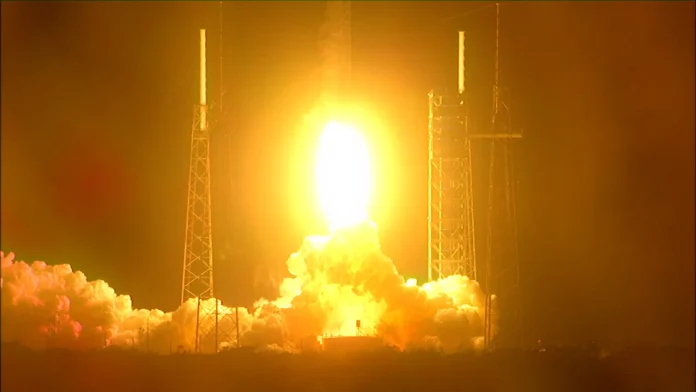NASA’s groundbreaking satellite mission aimed at studying the health of the oceans, air quality, and the implications of a shifting climate for humanity’s benefit was successfully launched into orbit at 1:33 a.m. EST on a Thursday.
Dubbed PACE, for Plankton, Aerosol, Climate, and ocean Ecosystem, the satellite embarked on its journey aboard a SpaceX Falcon 9 rocket from the Space Launch Complex 40 at Cape Canaveral Space Force Station in Florida. Within approximately five minutes post-launch, NASA confirmed successful communication with the satellite, which is functioning as anticipated.watch the full coverage here
NASA Administrator Bill Nelson extended congratulations to the PACE team for their successful launch, highlighting the mission’s unique contribution to understanding the atmospheric and oceanic particles’ role in global warming. He underscored the mission’s alignment with the Biden-Harris Administration’s climate objectives, emphasizing its potential to address critical climate change questions.
Situated hundreds of miles above the Earth, the PACE mission is set to explore the influence of minuscule entities, including microscopic aquatic life and airborne particles, often invisible to the naked eye.
Equipped with a hyperspectral ocean color instrument, PACE will analyze water bodies in wavelengths ranging from ultraviolet to near-infrared. This will enable the identification and monitoring of phytoplankton distributions globally on a daily basis, marking a first in space-based observations. The insights gained will support fisheries health forecasts, harmful algal bloom tracking, and marine environmental changes.
Additionally, the spacecraft is fitted with two polarimeter instruments, the Hyper-Angular Rainbow Polarimeter #2 and the Spectro-polarimeter for Planetary Exploration, designed to study sunlight’s interaction with atmospheric particles. This will provide new data on atmospheric aerosols, cloud characteristics, and air quality across various scales.
Through the integration of its instruments, PACE promises to enhance our understanding of ocean-atmosphere interactions and the impact of climate change on these dynamics.
Karen St. Germain, director of the Earth Science Division at NASA Headquarters, emphasized PACE’s role in advancing oceanic climate cycle knowledge. She highlighted the synergistic potential of combining PACE data with other NASA missions, heralding a new era of ocean science. PACE’s open-source approach and its readiness to provide data for immediate use underscore its significance in advancing Earth system understanding and supporting coastal community and industry adaptation to changing conditions.
Marjorie Haskell, PACE program executive at NASA Headquarters, praised the team’s commitment and resilience, especially in the face of challenges such as the global pandemic. The scientific community’s anticipation for the data PACE will provide mirrors the team’s passion and collective effort.
PACE will enable comprehensive studies on the climate change responses of the Earth’s oceans, including sea level rise, marine heatwaves, and biodiversity loss. By examining the role of phytoplankton in the global carbon cycle, PACE will shed light on the foundational elements of aquatic and global ecosystems crucial for food security, recreation, and the economy.
Jeremy Werdell, PACE project scientist at NASA’s Goddard Space Flight Center, expressed his excitement and pride in the mission’s realization, anticipating the novel discoveries PACE will facilitate. Managed by NASA Goddard, which also developed the spacecraft and its ocean color instrument, the mission’s launch services were overseen by NASA’s Launch Services Program at Kennedy Space Center. The mission’s polarimeter instruments were contributions from the University of Maryland, Baltimore County, and a Dutch consortium led by the Netherlands Institute for Space Research, Airbus Defence, and Space Netherlands.


